Heard of the IoT "Value Chain"? Here's How It Works
If you're new to the IoT, understanding the value chain will help you frame where to invest for a successful project. Here's how it works…
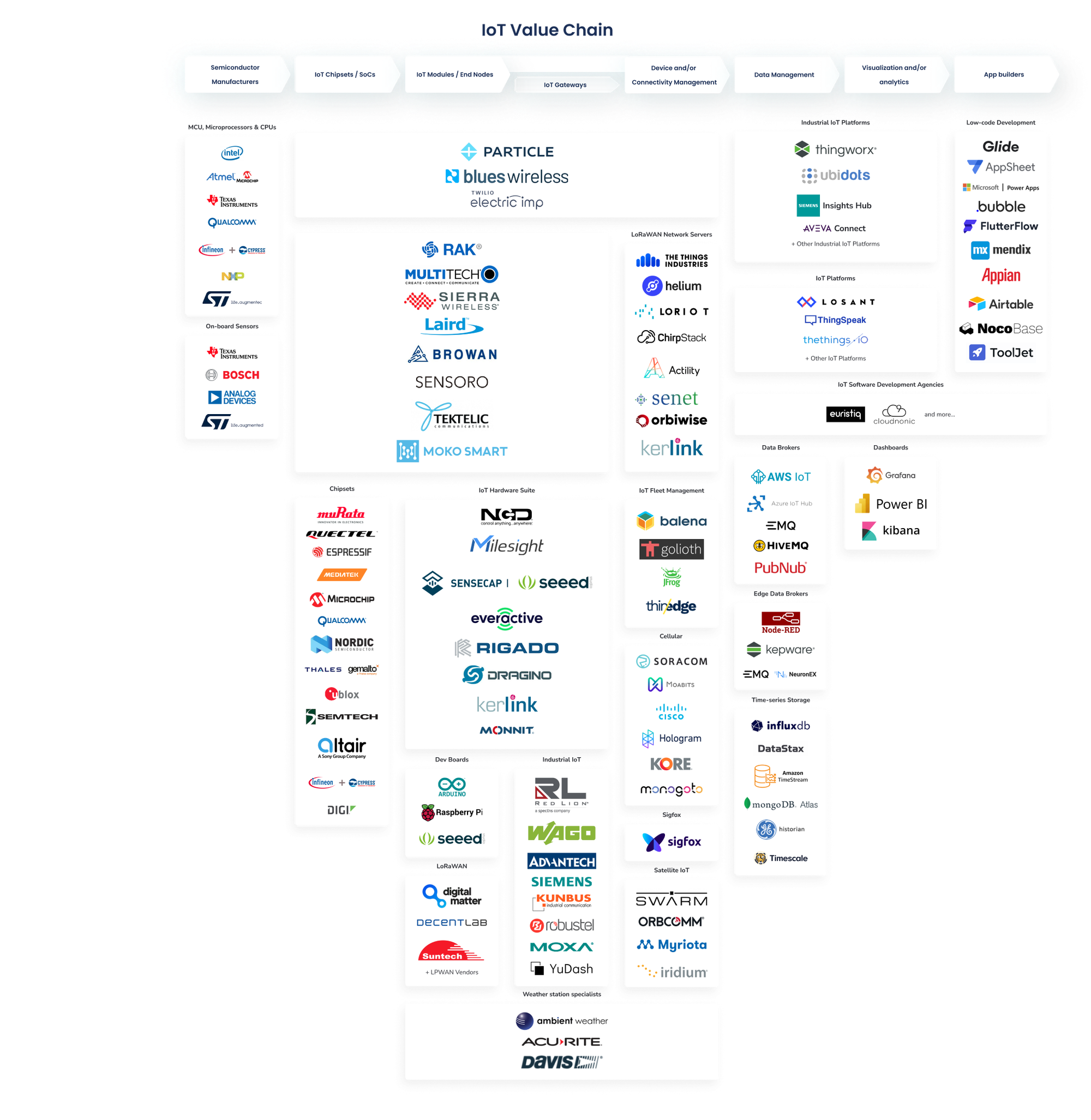
IoT is a world of options. What you can build, how you build it, and with what providers you do it has virtually no limits, which gives you a lot of control and the possibility to customize your solution to a great extent. If you are exploring IoT vendors to make the shift to Industry 4.0 or Smart Manufacturing, it's important to understand what the IoT value chain is, how it works, and what providers constitute it (at least to an extent).
» FREE TRIAL: Launch Your IoT Application To Market in Less Than 30 Days with Ubidots Drag-n-Drop IoT Dashboards
From experimental beginnings to industrial applications, IoT has now matured into serious solutions that consumers actively seek and many industries are rushing to embrace.
In this article, we explain the IoT value chain to offer you a bird's-eye view of what an IoT project structure looks like and how you can deliver added value to the end user.
Understanding the IoT value chain will put you in a better position to meet your project requirements by finding the right combination of hardware, connectivity, and software.
What is the IoT “Value Chain”?

Traditionally, a “value chain” is defined as the set of activities involved in delivering value to customers.
The IoT value chain definition is slightly different as it refers to a particular set of technologies that, together, make for a solution.
More specifically, the IoT value chain is a series of linked technologies or layers. These technologies are broken down into 3 major categories:
- Hardware – semiconductors, IoT nodes, gateways.
- Connectivity – vendors and platforms that supply the connectivity.
- Software – device management, data ingestion, application enablement, and analytics.
A closer look would be as follows:

These technologies are the building blocks of your IoT solution, and together, they enable your end-user use cases, be it as an IoT engineer inside a major company, a system integrator, or an IoT solutions provider.
Let's take a closer look at each component of the IoT value chain.
The IoT Value Chain Step by Step
The global value chain in IoT can be described as a pyramid, with the hardware manufacturers situated at the base and the end-users at the pinnacle.
By breaking the “levels” of the pyramid down into steps (or layers), it's easier to understand how things are linked together.
Step #1 of the IoT Value Chain – Hardware
Hardware encompasses everything from companies that manufacture the chips and chipsets to the firms that use these chips in the manufacture of IoT nodes and gateways:
Semiconductor & Chipset Manufacturers
Right at the bottom of the pyramid sit the semiconductor and chipset manufacturers (think Intel or Qualcomm).
They are crucial players in any digital technology, including IoT.
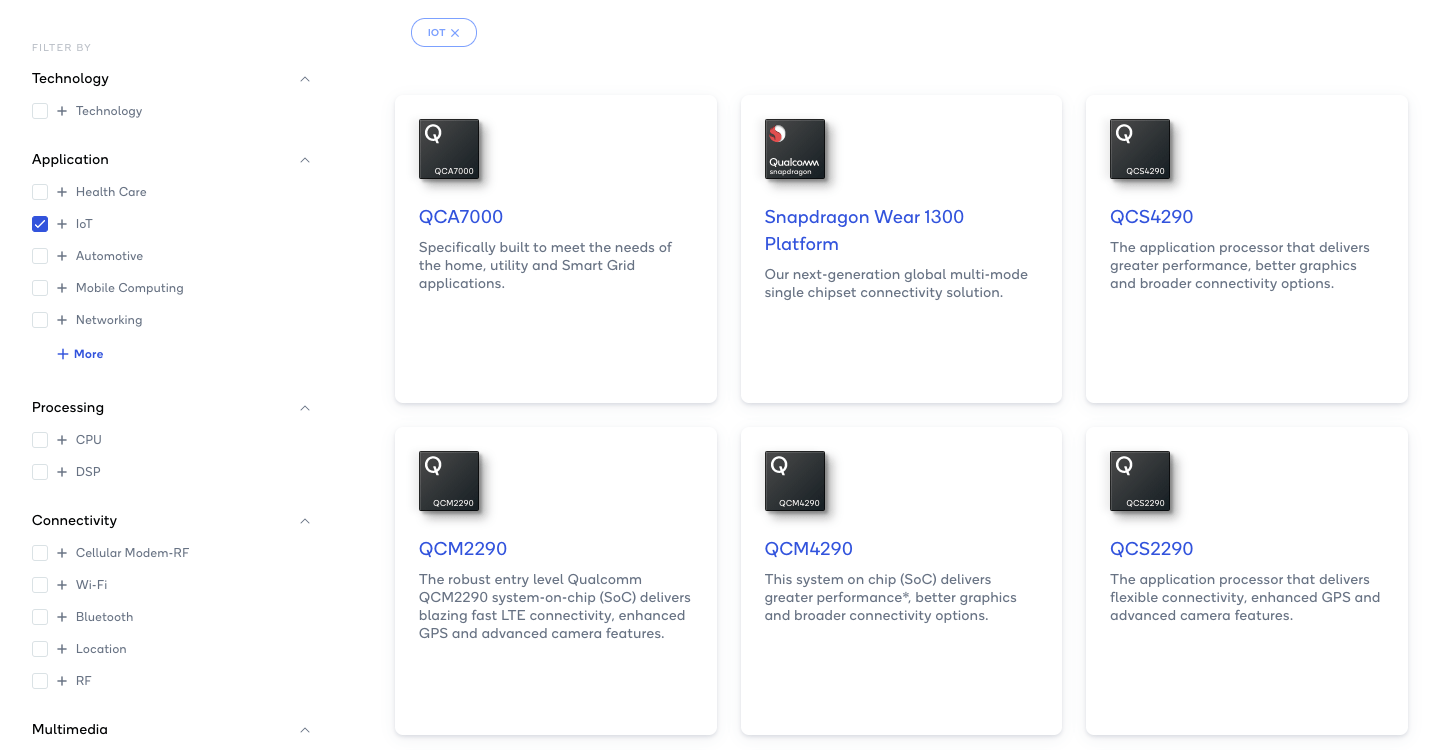
From the servers and data centers that act as gateways to the IoT nodes and devices, all are reliant on the physical hardware that these vendors supply.
Every device that can be considered part of the IoT network has a semiconductor at its heart (and, more likely, several depending on their intended use case).
Every IoT device has a semiconductor at its heart
The recent worldwide shortage of semiconductors has demonstrated the demand for these products and much of this has been driven by the demand for IoT devices.
Although key in the value chain, these are generally left to the nodes and device manufacturers to figure out.
You won't generally have to configure them yourself as an IoT enthusiast.
IoT Nodes Manufacturers
Fundamentally, the IoT node is the “thing” in the Internet of Things. These nodes provide data by connecting to the cloud.
They can either be sensors that only collect and forward data from their environment or a device equipped with both a sensor and an actuator that is, for example, turned on/off based on what the sensor registers and how it’s programmed.
When it comes to its part in the IoT value chain, the IoT node manufacturing sector is crucial. It is rapidly expanding as more and more types of devices are adapted to work in the IoT. Examples of node manufacturers are Blues Wireless and Seeed Studio.
Gateway Manufacturers
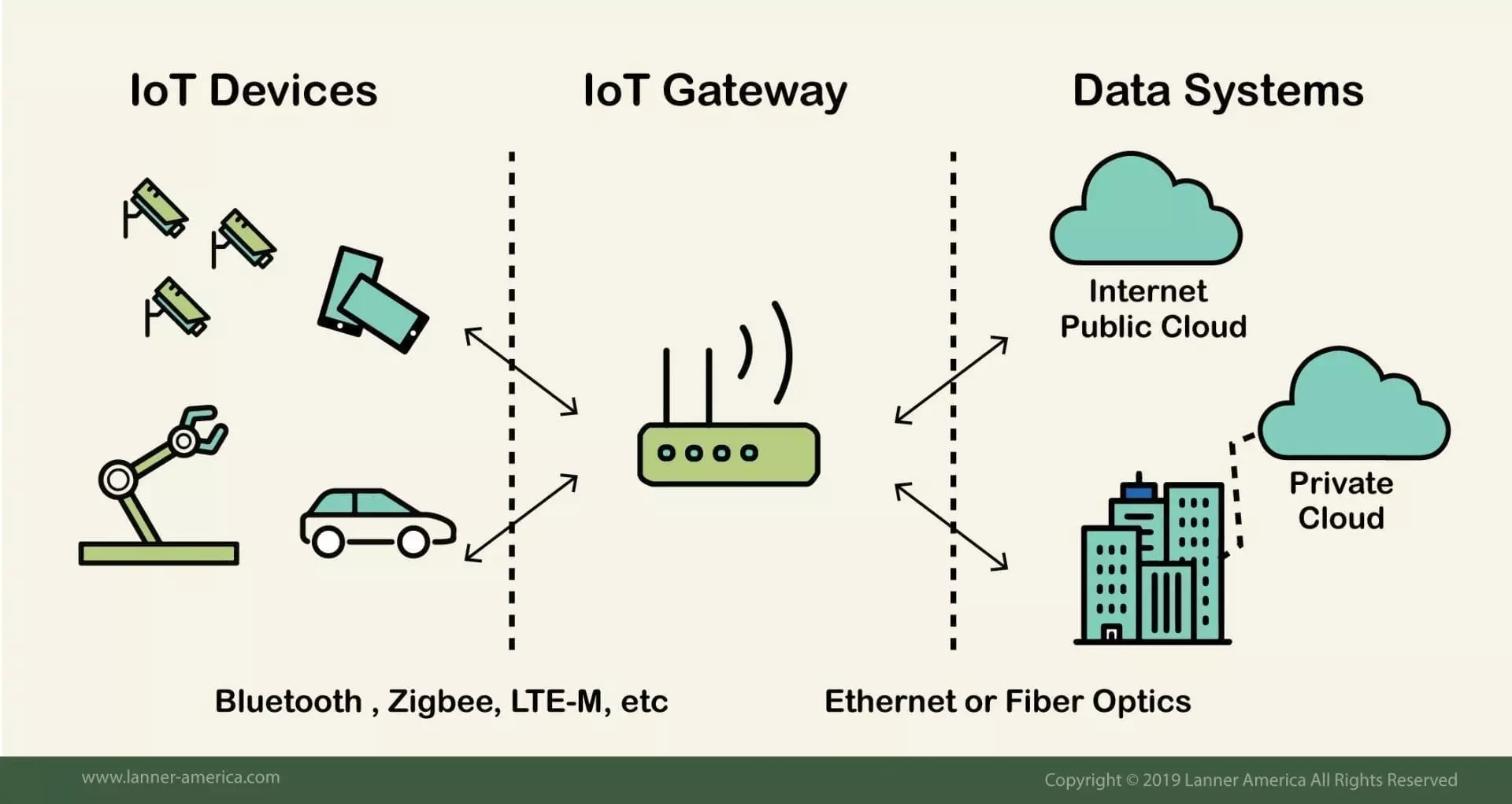
IoT gateways are the control tier that brings the IoT node and the end-user together. They're physical devices such as a Wi-Fi router, LoRaWAN gateway, or even a cellular tower.
In the IoT value chain, providing access to connected devices is essential, whether it is through home Wi-Fi, LPWAN, or cellular access.
However, many IoT solution providers are moving towards cellular technology, as it is a way to completely outsource the communications infrastructure to an external and specialized party — namely, a mobile operator.
Step #2 of the IoT Value Chain – Connectivity Management Platforms
Connectivity is the lifeblood of the IoT. For the IoT to function, it needs a bridge to act as a link between device sensors, data inputs, and the data network itself.
This is where the connectivity platform steps in.
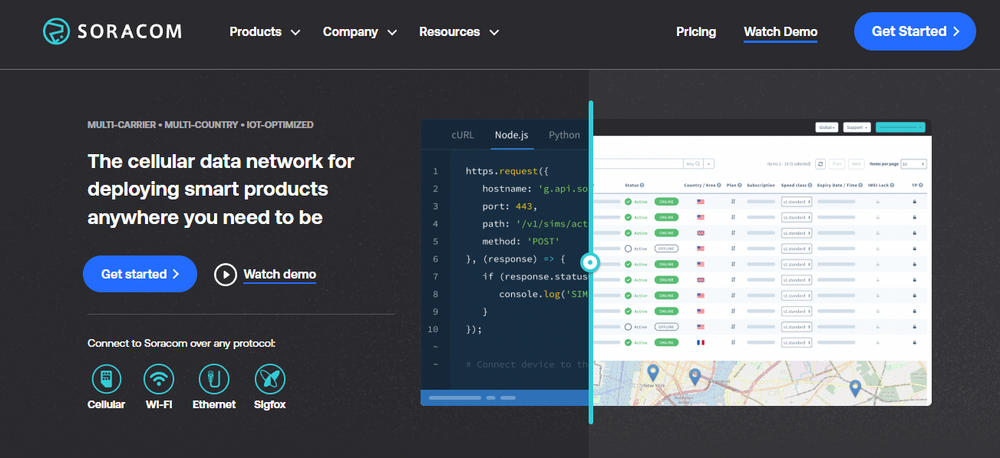
Connectivity Management Platforms (CMPs) first appeared in the cellular world.
They include features such as activating and deactivating SIM cards in real-time, changing the mobile network of SIM cards and setting up connectivity plans.
Even though most CMPs today are cellular-oriented, you can already find some IoT counterparts.
In fact, we could argue that every LPWAN middle layer between the device and the cloud can be regarded as a Device AND Connectivity Management platform.
Having said this, we will include LoRaWAN Network Servers, Sigfox cloud, and cellular-IoT platforms in this category to give you a complete overview:
| Cellular Connectivity Management Platforms (CMPs) | LPWAN | |
|---|---|---|
| Selected features | - Activating and deactivating SIM cards - Changing the mobile network of SIM cards - Setting up connectivity plans IoT-specific, all CMP features, plus: - Flash firmware to connected devices - Data compression mechanisms to save bandwidth - Set up data routes to external applications |
For LoRaWAN: - Monitor gateway status, coverage and signal strength - Manage gateways - Manage device credentials and security - Monitor connected devices - Set up data routes to external applications - Set up data decoding functions For Sigfox: - Monitor connected devices - Set up data routes to external applications - Set up data decoding functions |
| Examples | Particle Monogoto Soracom Moabits Hologram |
The Things Stack Helium Loriot Sigfox |
These platforms are key in the IoT value chain because they allow for scale.
Without them, you'd have to manually keep track of your deployments using a spreadsheet, or miss out on critical remote management capabilities such as firmware updates.
Step #3 of the IoT Value Chain – Software
Software powers everything around us, and it's especially important for the IoT as the programs that run on such small devices need to be as lightweight and efficient as possible.
Device Management / Fleet Management
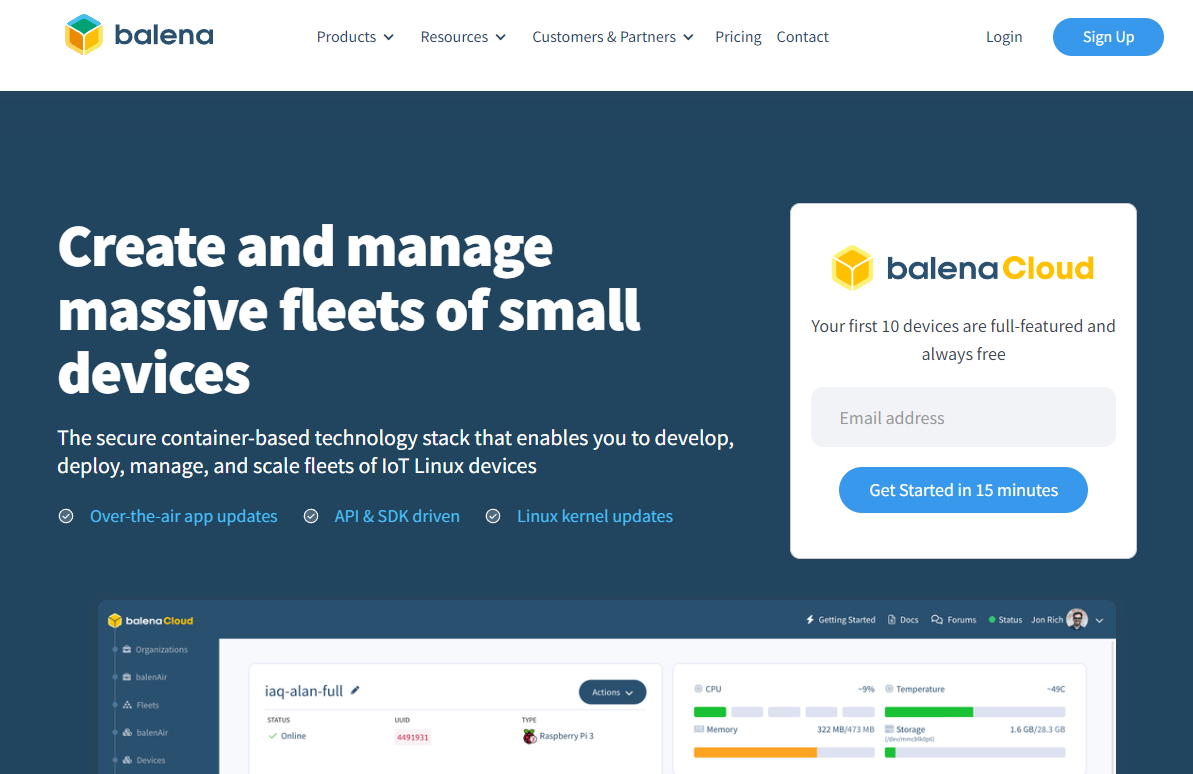
With the massive growth of the IoT sector, managing devices effectively has become one of the areas that are most in demand for solution providers.
These software platforms are responsible for configuring, maintaining, diagnosing, and monitoring IoT-connected devices.
The number of connected devices around the world has rapidly grown over the past decade and is expected to keep rising as our lives become steadily shaped by them.
This is why reliable device management systems are required to keep smart devices connected, secure, and up-to-date from a single hub.
Reliable device management is required to keep smart devices connected, secure, and up to date from a single hub
Looking to make IoT developers’ life easier, some CMP players have already baked device management capabilities into their products, while others focus solely on this layer.
For example, Particle (described above as a CMP) is also a Device Management platform, whereas platforms like Balena or Golioth are focused mainly on Device Management.
Data Management
The growth of data generated by billions of IoT devices has demanded an entire category for data management alone.
This layer is where you will find the big cloud players, each offering a data brokerage layer to ease the process of routing IoT data into their respective cloud services:
Application Enablement
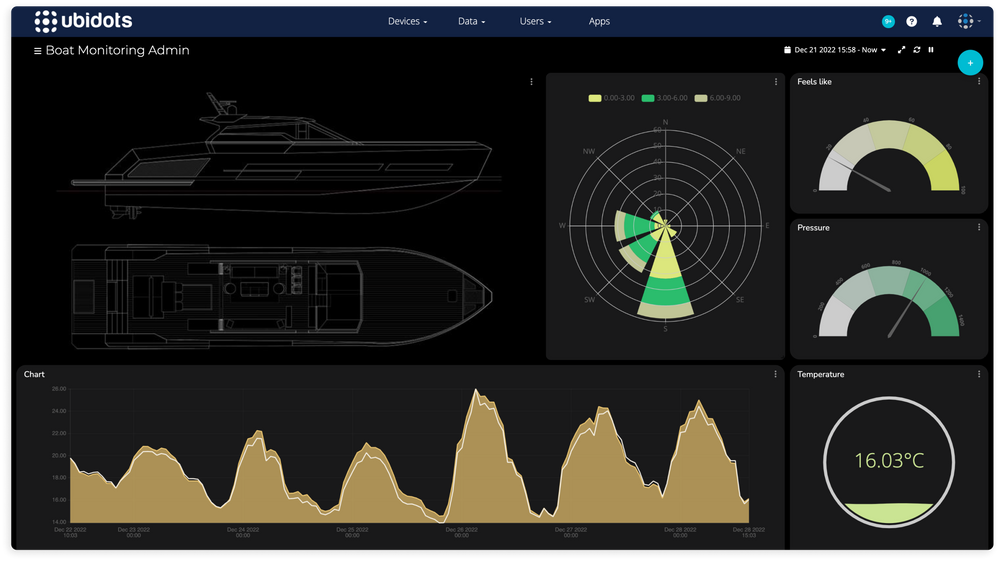
Application enablement platforms like Ubidots are designed to enable developers to rapidly develop IoT apps and roll them out without worrying about scale-up factors. They provide all the foundational services required for IoT app building and enablement including:
- Integrations with devices, gateways, or platforms belonging to the categories mentioned above.
- Data Storage
- Drag-and-Drop Visualizations
- Analytics
- Security
Enablement platforms are powerful tools that combine every other aspect of the value chain into one unified system, meaning you can store, process, visualize, and manipulate your data however you want, helping you deliver a final solution to the end-user.
Step #4 Solution Providers
Solution Providers facilitate the working together of individual IoT components in the most optimized way for the customer.
Because not everything is as “plug-and-play” as we would hope, Solution Providers have a massive role to play in the future of the IoT.
System Integrators
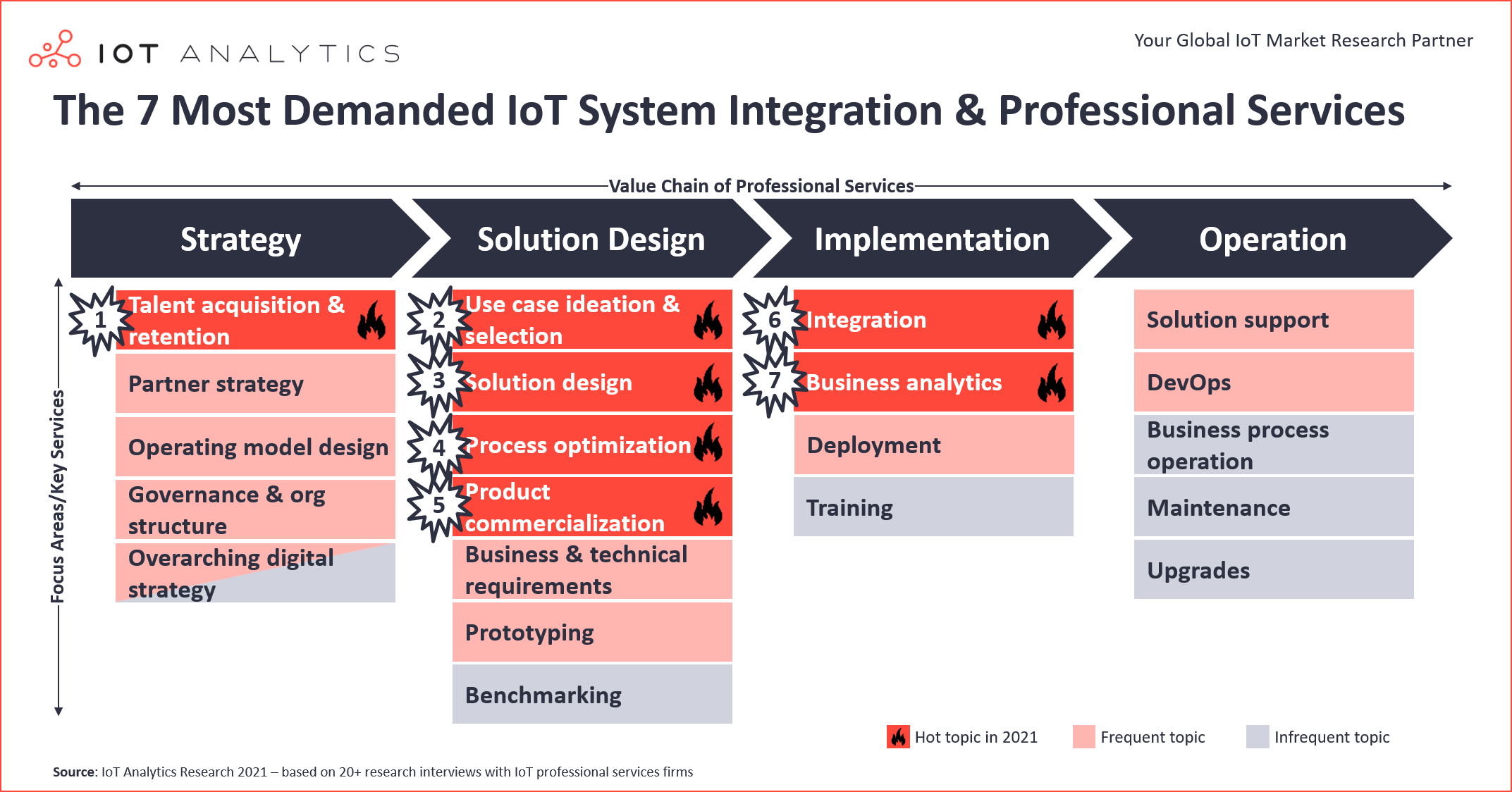
Companies that want to develop IoT solutions end up facing all kinds of challenges along the way due to the complex and fast-changing technical nature of the practice. That's where system integrators come in.
These are service vendors or solo professionals who spend most of their time figuring out specific systems so they can help implement them.
As explained by IoT Analytics, the talent gap for system integration is huge, with 78%+ of all companies who develop IoT solutions hiring external folks to help.
Specialized IoT Vendors and Entrepreneurs
As some of our customers like to call themselves, “Solution-as-a-Service” (SolaaS?) providers specialize in a vertical and, instead of selling integration projects, they’ve already packed and tested a winning hardware-to-cloud value offer in exchange of a recurring fee.
Smart Products Vendors
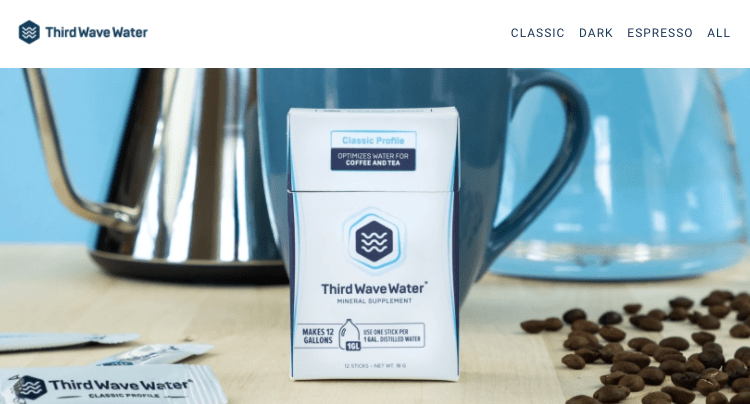
Here, a set of vendors manufacture and sell finished, connected products. These aren't solutions or integration projects; they're ready-for-use products that solve a specific problem.
Use cases may range from smart coffee machines to large industrial machinery that is already sold as “cloud-enabled” — no need to call your local integrator.
Ex: Third Wave Water is incorporating IoT data into their mineral supplement products, in order to help you serve better coffee.
Examples of IoT Value Chains
As with most growing technology stacks, there is no "single" IoT value chain that makes or breaks your application.
Here are 2 examples of specific IoT value chains:
The LoRaWAN Value Chain
Long-Range Wide-Area Networking (LoRaWAN) is huge in IoT.
Devices that use this technology are typically sensors or monitors that are spread out across a large area.
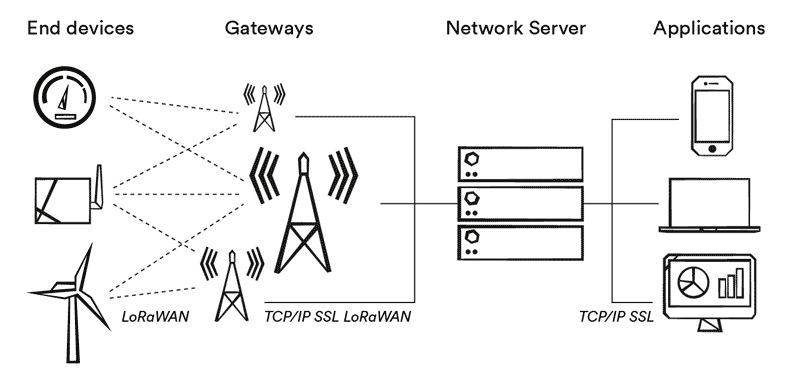
The growth of this sector is expected to increase dramatically because of LoRaWAN's open protocol (compared to something like NB-IoT which is privatized).
Examples of where the LoRaWAN value chain is effective include:
- Supply chains - Allowing to monitor assets across multiple vendors.
- Smart meters - Connecting all metering devices into one hub.
- Agriculture - Spreading out sensors across wide fields.
At its heart, the LoRaWAN value chain encompasses all the same steps of the “traditional" IoT Value Chain. However, the connectivity component is where things shift significantly.
IoT Value Chains in Smart Manufacturing
Smart manufacturing allows manufacturers to streamline production, simplify logistics, and become more responsive and adaptive to an always-changing consumer market.
Things like Wago’s PLCs, which have Node-RED incorporated and can therefore be quickly integrated to the cloud, are great enablers in this front, helping make the connected factory a reality.
By connecting a manufacturing facility directly to the internet (security is an important aspect to consider), companies can design innovative business models.
By connecting a manufacturing facility directly to the internet, companies can design innovative business models.
For instance, a company that manufactures and sells industrial equipment may instead opt to supply their equipment as an "over-the-air" service, or OTA in short.
In this case, the company would be able to bill for the usage of their equipment based on information that is fed back from the unit.
This information could cover factors like consumables, time in use, user behavior, tasks performed, and more.
Understanding the Value Chain of Your IoT Project
Building an IoT value chain for your project is simpler when you understand the steps involved in the value chain.
But as with any project, the foundations must be solid.
Choosing the right hardware, gateway, and platform is essential. Before you take the plunge, the following considerations can help you make an informed decision:
- What is the problem you are trying to solve?
- What data can help resolve that problem?
- How can you serve that data to a user?
Arming yourself with the answers to these questions will go a long way to ensuring a successful roll-out of your IoT project.
The Ubidots platform can help you achieve your IoT goals.
It is backed up by our years of experience in the field and is simple to use but at the same time, deceivingly powerful.
» If you're in any part of the chain, and would like to be part of our partner ecosystem, reach out to us by filling our partner form.
Originally published Feb 28th, 2023
Frequently asked questions
How many layers are there in the IoT Value Chain?
There are four main layers in the IoT value chain: 1) Hardware; 2) Connectivity Platforms, 3) Software, and; 4) Solution Providers. Each layer has sub-layers, explained in the post.
What is meant by value chain?
Conceptually, a value chain is the set of steps that a business takes in the creation of a product or service. In traditional businesses, this would cover everything from the purchase of raw goods to their delivery on the marketplace. For IoT, it is the delivery of an IoT-connected solution.
